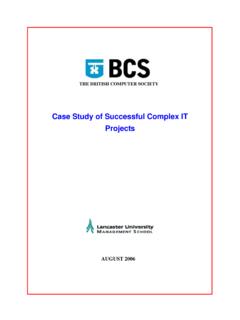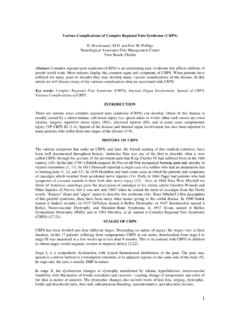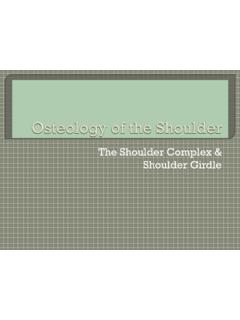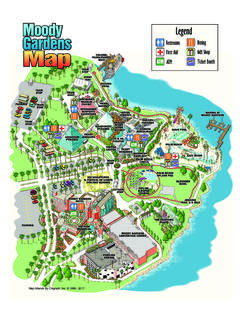Transcription of Challenging the Application of PMESII-PT in a …
1 Approved for Public Release; Distribution is Unlimited Challenging the Application of PMESII-PT in a complex Environment A Monograph By MAJ Brian M. Ducote United States Army School of Advanced Military Studies United States Army Command and General Staff College Fort Leavenworth, Kansas AY 2010-1 REPORT DOCUMENTATION PAGE Form Approved OMB No. 0704-0188 Public reporting burden for this collection of information is estimated to average 1 hour per response, including the time for reviewing instructions, searching existing data sources, gathering and maintaining the data needed, and completing and reviewing this collection of information. Send comments regarding this burden estimate or any other aspect of this collection of information, including suggestions for reducing this burden to Department of Defense, Washington Headquarters Services, Directorate for Information Operations and Reports (0704-0188), 1215 Jefferson Davis Highway, Suite 1204, Arlington, VA 22202-4302.
2 Respondents should be aware that notwithstanding any other provision of law, no person shall be subject to any penalty for failing to comply with a collection of information if it does not display a currently valid OMB control number. PLEASE DO NOT RETURN YOUR FORM TO THE ABOVE ADDRESS. 1. REPORT DATE (DD-MM-YYYY) 26-04-2010 2. REPORT TYPE SAMS Monograph 3. DATES COVERED (From - To) July 2009 May 2010 4. TITLE AND SUBTITLE Challenging the Application of PMESII-PT in a complex Environment 5a. CONTRACT NUMBER 5b. GRANT NUMBER 5c. PROGRAM ELEMENT NUMBER 6. AUTHOR(S) Major Brian M. Ducote, United States Army 5d. PROJECT NUMBER 5e. TASK NUMBER 5f. WORK UNIT NUMBER 7. PERFORMING ORGANIZATION NAME(S) AND ADDRESS(ES) School of Advanced Military Studies (SAMS) 250 Gibbon Avenue Fort Leavenworth, KS 66027-2134 8.
3 PERFORMING ORG REPORT NUMBER 9. SPONSORING / MONITORING AGENCY NAME(S) AND ADDRESS(ES) 10. SPONSOR/MONITOR S ACRONYM(S) 11. SPONSOR/MONITOR S REPORT NUMBER(S) 12. DISTRIBUTION / AVAILABILITY STATEMENT Approved for Public Release; Distribution is Unlimited 13. SUPPLEMENTARY NOTES 14. ABSTRACT Military officials often utilize the PMESII-PT acronym (Political, Military, Economic, Social, Information, Infrastructure, Physical Environment, and Time) as an analytical start point to assess an operational environment. However, the linear methodology restricts a holistic understanding of fundamentally asymmetric realms where military leaders currently operate. Scholars and other experts have previously applied more ontologically based and holistic approaches to understand complex social systems.
4 By comparing both PMESII-PT and these holistic approaches, this paper accomplishes three objectives. First, the monograph concludes that the linear PMESII-PT methodology is not sufficient to assess and convey understanding of a complex environment. Second, the monograph specifically identifies the incorporation of identity theory and the proper use of the narrative as the gap between PMESII-PT and holistic approaches. Finally, in light of accusations that the military still exhibits a lack of cultural understanding, this monograph presents a more conceptual start point for military designers. By applying a process of metaquestioning to explore the facets any complex environment, military designers can ultimately produce an identity-based narration which leads to a level of holistic understanding unachievable by traditional methods.
5 15. SUBJECT TERMS PMESII-PT , Holistic Inquiry, Identity, Design, Narrative, Gharajedaghi, Systems of Systems, Systems Thinking, Ontology, Holism, complex Environments 16. SECURITY CLASSIFICATION OF: (U) 17. LIMITATION OF ABSTRACT 18. NUMBER OF PAGES 19a. NAME OF RESPONSIBLE PERSON Stefan J. Banach COL, Army a. REPORT b. ABSTRACT c. THIS PAGE 19b. PHONE NUMBER (include area code) (U) (U) (U) (U) 102 913-758-3302 Standard Form 298 (Rev. 8-98) Prescribed by ANSI Std. ii SCHOOL OF ADVANCED MILITARY STUDIES MONOGRAPH APPROVAL MAJ Brian M. Ducote Challenging the Application of PMESII-PT in a complex Environment This monograph was defended by the degree candidate on 25 March 2010 and approved by the monograph director and reader named below. Approved by: _____ Monograph Director Alice Butler-Smith, _____ Monograph Reader James Tennant, COL, SF _____ Director, Stefan J.
6 Banach, COL, IN School of Advanced Military Studies _____ Director, Robert F. Baumann, Graduate Degree Programs Disclaimer: Opinions, conclusions, and recommendations expressed or implied within are solely those of the author, and do not represent the views of the US Army School of Advanced Military Studies, the US Army Command and General Staff College, the United States Army, the Department of Defense, or any other US government agency. Cleared for public release: distribution unlimited. iii Abstract Challenging THE Application OF PMESII-PT IN A complex ENVIRONMENT by MAJ Brian M. Ducote, SVC, 102 pages. Military officials often utilize the PMESII-PT acronym (Political, Military, Economic, Social, Information, Infrastructure, Physical Environment, and Time) as an analytical start point to assess an operational environment.
7 Using the categories within the PMESII-PT construct, planners can guide their efforts to understand in detail not only the factors that comprise an environment but also the interactions among the various agents within the system. However, the linear methodology only successfully reveals the what but not the why of complex systems. PMESII-PT restricts a holistic understanding of fundamentally asymmetric realms where military leaders currently operate. According to Jasmid Gharajedaghi in Systems Thinking: Managing Chaos and Complexity, complex environments exhibit characteristics of openness, purposefulness, multidimensionality, emergence, and counterintuitiveness. Therefore, any form of inquiry designed to understand such an environment must address such aspects to convey meaning.
8 In the past, scholars and other experts applied more ontologically based and holistic approaches than PMESII-PT to not only address the characteristics of complex systems but to convey to their audiences a rich understanding of such environments. By comparing both PMESII-PT and these holistic approaches in the context of Gharajedaghi s precepts, this monograph accomplishes three objectives. First, the monograph concludes that the linear PMESII-PT methodology is not sufficient to assess and convey understanding of a complex environment. Second, the monograph specifically identifies the incorporation of identity theory and the proper use of the narrative as the gap between PMESII-PT and holistic approaches. Finally, in light of accusations that the military still exhibits a lack of cultural understanding, this monograph presents a more conceptual start point which explores the facets any complex environment in order to produce an identity-based narration which leads to holistic understanding.
9 Rather than using a linear and predefined list of variables, like PMESII-PT , users of this more abstract approach will apply a more generic form of inquiry to ascertain the why and not simply the what of an environment. In an effort to ascertain a holistic understanding rather than a detailed familiarity, the method of inquiry uses the more conceptual dimensions of wealth, truth, beauty, values and power of complex environments as a general framework. Instead of using specific categories to fill in answers, the proposed approach guides users to ask questions about these very foundational social facets. Applying an iterative and meta-cognitive form of inquiry that asks questions about the essence of the environment in the quest to convey meaning, the proposed approach should be able to lead users to a holistic understanding as opposed to just a substantial increase in knowledge about a complex environment.
10 There is no shortage of texts on systems thinking as it applies to problem solving. Business strategists, military leaders, architects, and artists attempt to rightfully incorporate systems based approaches in their respective organizations or disciplines. A lot of academic research focuses on either how to leverage systems thinking to achieve results in complex environments or the nature of complex environments. However, none provide a conceptual approach to understand the environment holistically. This monograph attempts to address in greater detail a challenge facing specifically system thinkers in the military who require a deep understanding of the complex social milieus where they operate. Furthermore, this monograph provides the framework for a holistic approach that can ideally result in a degree of understanding currently unattainable through PMESII-PT .


















